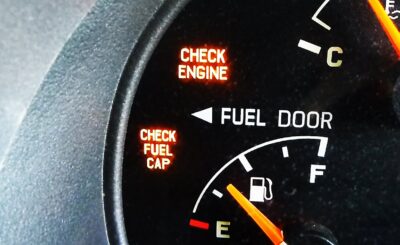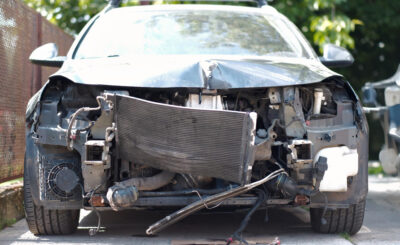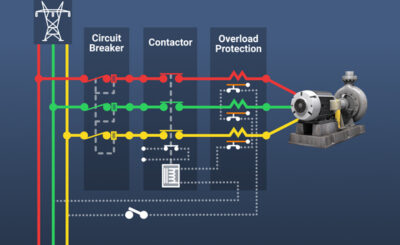Motorcycle customization has become a popular way for riders to express their personal style and protect their bike’s original paint. Among the many options available, vinyl wrapping stands out as an affordable, versatile, and reversible solution. But one of the most common questions that enthusiasts ask is: how much does it cost to wrap a motorcycle?
In this detailed guide, we’ll explore everything you need to know about motorcycle wraps—from pricing factors and benefits to types of vinyl and where to get the best wrap for your bike. Whether you’re considering a full wrap or just partial customization, this article will help you make an informed decision.
What Is Motorcycle Wrapping?
Motorcycle wrapping is the process of applying a thin vinyl film over the bike’s painted surfaces. This vinyl comes in a wide range of colors, finishes, and textures—matte, gloss, satin, carbon fiber, chrome, and even custom printed designs. Wrapping can cover the entire motorcycle or just select parts like the fuel tank, fenders, or fairings.
Unlike paint, vinyl wrap protects the original surface from scratches, UV rays, and minor abrasions, while allowing easy removal or change whenever you want a new look. Wrapping is increasingly popular because it offers a fresh aesthetic without the permanence or high cost of a full repaint.
Factors Affecting the Cost to Wrap a Motorcycle
Several elements influence the overall price when asking, how much does it cost to wrap a motorcycle? Understanding these factors will help you set realistic expectations.
1. Size and Complexity of the Motorcycle
A small, naked bike with minimal fairings will cost less to wrap compared to a fully-faired sportbike or touring motorcycle. The more surfaces and curves the wrap needs to cover, the more time and material are required, increasing labor costs.
2. Type and Quality of Vinyl
There are various grades of vinyl film available. Premium brands like 3M and Avery Dennison offer high durability, better color retention, and easier installation but come at a higher price. Cheaper vinyl might reduce upfront costs but may fade, peel, or bubble sooner.
3. Full vs. Partial Wrap
Do you want a complete wrap covering every visible panel or just a partial wrap focusing on the tank, fenders, or side panels? Partial wraps save money but limit the transformation.
4. Design Complexity and Customization
Custom graphics, printed designs, or multi-color wraps require more preparation and skilled labor, which can add to the cost. Simple, single-color wraps are generally less expensive.
5. Labor and Installation
The skill and experience of the installer affect the price. Professional shops with specialized motorcycle wrap expertise charge more but ensure a flawless finish that lasts. DIY kits and tutorials can reduce costs but carry the risk of errors or damage.
Typical Price Range for Motorcycle Wraps
Generally, the cost to wrap a motorcycle ranges from $500 to $3,000 depending on the factors above.
- Basic Partial Wrap (small sections, simple color): $500 to $1,000
- Full Wrap on Smaller Bikes (e.g., dirt bikes, naked bikes): $1,000 to $1,800
- Full Wrap on Larger or Complex Bikes (fully-faired sportbikes or cruisers): $1,800 to $3,000+
These prices include the vinyl materials and professional installation. Custom graphic wraps or specialty finishes can push costs higher.
Benefits of Wrapping Your Motorcycle
If you’re on the fence about investing in a vinyl wrap, here are several benefits that often justify the price:
- Paint Protection: Wraps shield your bike’s paint from minor scratches, dirt, and UV damage, helping maintain resale value.
- Customization: Choose from countless colors, textures, and patterns to create a truly unique look.
- Reversibility: Unlike paint, wraps can be removed without damaging the original finish, ideal for leased or collector bikes.
- Cost-Effective: Compared to a high-quality paint job, wrapping usually costs less and takes less time.
- Easy Maintenance: Vinyl wrap is easier to clean and resistant to fading or staining.
How to Choose the Right Wrap for Your Motorcycle
Picking the right wrap is as important as choosing a skilled installer. Here’s what to consider:
Vinyl Quality and Brand
Choose premium vinyl brands known for durability and ease of installation. 3M and Avery Dennison are trusted by professionals worldwide for motorcycle wraps.
Finish and Texture
Decide on the finish that matches your style—matte gives a stealthy look, gloss shines like paint, satin offers a balance, and carbon fiber texture adds a sporty edge.
Color and Design
Consider the environment where you ride. Bright or reflective wraps increase visibility, enhancing safety. Custom designs allow personal branding or graphics, especially popular among bike clubs.
Installer Reputation
Always check reviews and portfolios of wrap installers. A professional shop like 10kwraps.com specializes in vehicle wraps and can deliver expert advice and flawless installation.
DIY vs. Professional Installation
While some riders may attempt a DIY motorcycle wrap to save money, professional installation is usually worth the extra cost. Installing vinyl on a motorcycle is more challenging than cars due to the curves, small parts, and textured surfaces.
Professional installers have:
- Experience with heat guns and stretching vinyl to conform to complex shapes
- Proper tools and techniques to avoid bubbles and creases
- Knowledge of prepping surfaces for better adhesion
If budget is tight, partial DIY wrapping is possible, but full wraps usually demand professional help for a clean and durable finish.
Maintaining Your Motorcycle Wrap

After investing in a vinyl wrap, proper maintenance ensures it lasts:
- Wash with mild soap and water regularly
- Avoid high-pressure washers directly on edges
- Park in shade to prevent UV fading
- Avoid abrasive cleaners or waxes not designed for vinyl
- Repair minor damage early with vinyl repair kits
With care, a quality motorcycle wrap can last 5 to 7 years.
Where to Get Your Motorcycle Wrapped?
If you’re wondering where to get your motorcycle wrapped, look for reputable shops specializing in vehicle wraps. For instance, 10kwraps.com offers a wide range of wrap options and expert installation services tailored to motorcycles and cars alike. Their team understands how to handle different bike models and ensures high-quality finishes using premium vinyl.
Alternative Options to Vinyl Wrapping
While vinyl wrapping is versatile, some riders might consider alternatives:
- Custom Paint Jobs: More permanent but costlier and time-consuming.
- Plasti Dip: A removable rubber coating spray, cheaper but less durable.
- Decals and Stickers: Great for smaller areas but limited in coverage.
Wrapping strikes a balance between cost, durability, and style flexibility.
Frequently Asked Questions About Motorcycle Wrapping Costs
Q: Can I wrap my motorcycle myself?
A: Yes, but it requires skill and patience. For complex bikes, professional help is recommended to avoid mistakes.
Q: How long does a motorcycle wrap last?
A: With proper care, quality vinyl can last 5 to 7 years.
Q: Does wrapping affect bike resale value?
A: Usually positively, as the original paint underneath stays protected.
Q: Can I wrap over existing damage or paint defects?
A: It’s best to fix any damage before wrapping to ensure adhesion and a smooth finish.
Concluding Insights
Understanding how much does it cost to wrap a motorcycle helps riders budget and choose the best customization option. While prices vary widely based on bike size, wrap quality, and design complexity, investing in a professional wrap delivers excellent protection and style without the permanence of paint.
Whether you want a sleek matte black finish or an eye-catching custom design, vinyl wrapping offers unparalleled versatility. Be sure to consult reputable shops like 10kwraps.com for expert advice and professional installation to get the best results for your ride.
Ready to transform your motorcycle’s look while protecting its original paint? Wrapping may just be the perfect solution.








